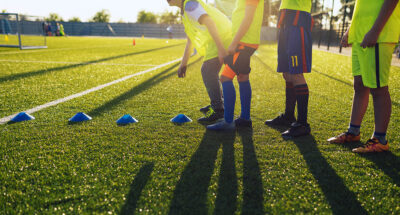
Giving and Receiving Feedback in Physical Education
Students take turns providing feedback to one another, reflecting on their own skills, and setting growth goals for themselves.

Students take turns providing feedback to one another, reflecting on their own skills, and setting growth goals for themselves.
Students will:
Katerina Mouratidou, Ph.D., Aristotle University of Thessaloniki
A study done with 157 Greek students ages 11-13 found that a six-week physical education intervention that focused on creating a non-competitive climate among students increased students’ moral reasoning. As part of the intervention students practiced giving each other feedback, with an emphasis on setting goals at the start of a lesson based on individual performances rather than comparisons with other students.
Furthermore, research suggests that deliberate reflection can strengthen moral character, particularly by increasing individuals’ practice of humility.
Helping students to understand and decide between right and wrong, or moral reasoning skills, is a key facet of education. To quote Martin Luther King, Jr., “The function of education… is to teach one to think intensively and to think critically. But education which stops with efficiency may prove the greatest menace to society. The most dangerous criminal may be the man gifted with reason, but with no morals.”
Research has found that student athletes who judge their skills according to their own level of competence rather than comparing themselves to others show more respect for good sportspersonship, sports officials, and opponents, and for their own commitment towards the sport—all things that help cultivate a strong moral foundation.
Humility is also key to moral development. Research shows that as children grow, they become better able to notice and appreciate humility, making them gravitate toward others who are humble. Thus, cultivating humility in students is important as it can help them develop stronger relationships with others. Furthermore, research has found that humility is a common trait in purposeful young people, suggesting that it might support children in achieving their long-term life goals. Students who show greater humility also show greater intrinsic motivation and receptiveness to feedback, qualities that are important to students’ academic success and persistence in sports.

Do you want to dive deeper into the science behind our GGIE practices? Enroll in one of our online courses for educators!
Comments